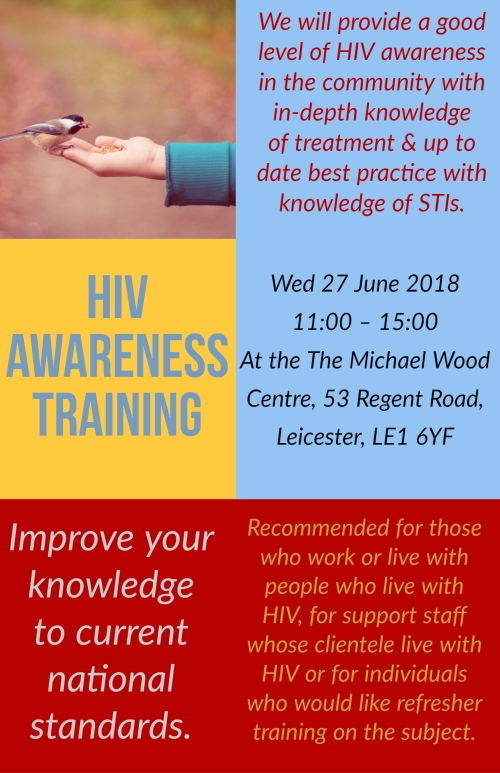
HIV Testing Truck at Chicago Pride (Credit: W. Imara Canady)
It seems as if many great things are sparked by conflict. The civil rights movement was birthed from years of racism, violence, and subjugation. The women’s movement followed the same path and pursuit of equality. And LGBTQ pride is no exception. In 1969, people tired of being marginalized, assaulted, and arrested decided to take a stand. Hence, the Stonewall riots ushered in a new phase of LGBTQ liberation. A year later, on June 28,1970, Christopher Street Liberation Day took place in New York. Chicago actually one-upped the Big Apple by having a Gay Pride parade the day before that same year.
Article via TheBody.com , the complete HIV/AIDS Resource.
The reasons to go to a pride festival are as wide and vast as the number of prides themselves. Some attend for the parties. Others love having access to arts and culture scenes. Many prides debut new films with LGBT themes as part of their programming. Today, pride celebrations take place in almost every major city in the U.S. and many across the world. But one of the mainstays of pride might be changing: HIV prevention and awareness.
According to the Centers for Disease Control and Prevention (CDC), the number of new HIV diagnosis in 2016 reached 39,782. Although this is a decline from previous years, it shows large vulnerabilities among certain groups. African Americans were hit hard, accounting for 17,528 of those diagnoses. The number of transmissions also leans heavily on the LGBTQ population, with 26,570 transmissions occurring among men who have sex with men (MSM). The CDC has also reported that 2,351 transgender people were diagnosed with HIV between 2009 and 2014. According to its estimates, about 22%-28% of trans women are HIV positive and over half of black trans women are HIV positive.
For many, prides have been a place for education and information on HIV — and testing.
“It’s interesting in the case of black prides in particular,” Earl D. Fowlkes Jr., president and CEO of the Center for Black Equity, said in a phone interview. “The purpose of pride was to disseminate AIDS information for MSM. That was one of the major goals.”
Fowlkes reflected back on 28 years ago when D.C. Black Pride was just getting started. He continued, “We knew about New York and LA. We wanted to get information into the hands of people dying with the disease in D.C.”
Over the years, Fowlkes, who works with several pride organizations around the world, has noticed a shift in attitude about the inclusion of HIV messages in the celebrations.
“It’s not in the forefront anymore,” Fowlkes said. “There’s a little AIDS fatigue.”
Les Pappas, president of Better World Advertising (a company that has created HIV-prevention marketing campaigns for more than 20 years), has had a similar experience with perceptions about HIV prevention and campaigns to engage audiences.
“To me, it’s more about the community, how the messages have shifted,” Pappas said. “I can remember, going back to 1984-85, prides were very sad affairs, and people were also frightened. There was so much memorializing. There hadn’t been a lot of advances in the early days.”
Pappas said that HIV outreach has mostly shifted to virtual spaces. “In past years, half the booths at pride would be HIV focused. Now, a lot of our efforts around HIV have moved online.”
In addition to targeting the web and apps, education campaigns’ focus has itself changed.
“There is more focus around clinics and treatments,” Pappas said. “We have gotten to the point where the biggest focus is providing people with medicine either providing [treatment or for] prevention. It’s done year round.”
“We did a float in San Francisco — a PrEP [pre-exposure prophylaxis] pill,” Pappas said. “That is where things are, and the medicalization of [HIV] has changed the dynamic.”
W. Imara Canady, regional director of communications and community engagement with AIDS Healthcare Foundation (AHF) and Southern Bureau chair, Black Leadership AIDS Crisis Coalition, said that testing is one part of HIV prevention and education that has remained during prides.
“We are actually seeing that being involved with prides is still a great way to connect,” Canady said in a phone interview. “At L.A. Pride just last week, we tested 1,000 individuals.”
Canady continued: “[A] lot of it is the placement of where the testing spaces are. We are also marketing in a very non-traditional ways. We are using mobile testing units that don’t feel like you’re going to the hospital van. We make it a hip space to get tested. Really, what we’re working to do is make testing a part of the culture,” Canady said, “to normalize testing in these communities and creative spaces.”
Due to changes in HIV prevention and treatment, Pappas sees a shift in the services offered at pride, not necessarily the relevance of prides themselves as tools to reach people.
“As a dinosaur in this, I remember when there was no test,” Pappas said. “After that, there was no effective treatment. After treatments came online, PrEP was a game changer. We’re at a stage in our communities where it’s becoming about access. The bigger issue for the larger portion of the community, by and large, is being able to take advantage of these new developments.”
Thanks for reading, let us know what you think in the comments below, or you can find us on Facebook, Twitter or Instagram!



(Or subscribe to our newsletter)







